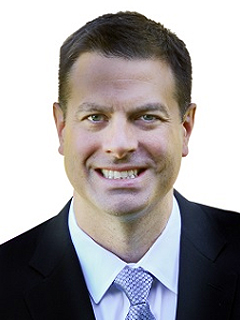Well-being is much broader than simply focusing on Employee Assistance Programs (EAP) or the latest well-being app. It’s a holistic view of how we can best support our people to be their best selves—yes, for the business—but also for their own careers and lives.
It means breaking the stigma of mental ill-health, encouraging and promoting physical wellness, providing formal and informal support to colleagues who need it in the moment, and having a comprehensive strategy around well-being. Listening to their needs—beyond the annual survey—and providing in-the-moment support and guidance on well-being.
In our survey of HR leaders, we found that for 85 percent, the mental health and well-being of their employees has become a bigger focus for their organization over the past two to three years.1
Gordon Harold, Professor of the Psychology of Education and Mental Health at the University of Cambridge, says recognizing the differences between “mental health,” “mental ill-health,” and “well-being” can make a big impact on an organization’s approach to organizational policies and programs. “We need to draw the distinctions, because there are very different strategies involved,” he says.2
Harold says:
- Mental health is about promoting mental health—supporting and reducing the risk of mental-ill health.
- Mental ill health (such as anxiety or depression) is often downstream from the early causes and will need different programs.
- Well-being can refer to more holistic programs that cover spiritual, physical, emotional, and social well-being.
- Mental health is a component feature of general well-being, but interventions around mental health and mental ill health should not get lost in this wider definition.
Has the mental health and well-being of your employees become a bigger focus for your organization over the last two to three years?
Looking ahead, improving the mental health and well-being of the workforce was expected to be a future focus of 53 percent of respondents.3 However, when it comes to having the capability to deliver on improving mental health and well-being of the workforce, 28 percent ranked it first—suggesting room for improvement on this growing matter of importance.4
For our Pathfinders, this effort on well-being is happening right now. For non-Pathfinders, they may have well-being initiatives; however, the plans may be disconnected and not easily accessible in the flow of work. Some may be standard EAP offerings, or pilots in certain parts of the organization. In comparison, Pathfinders have integrated well-being into their employee experience—it is in the flow of their work, and easily accessible through multiple channels and tailored offerings.
Take the next step
Moving forward, one very important thing organizations will want to do is better understand the nuances between mental health, mental ill health, and well-being, as each in fact leads to different policies and programs. Getting deeper into these nuances will increasingly matter in the next few years, as a cohort that is very informed about these issues and nuances—and more open in their approach to discussing them—will start to enter workplaces.
Trying to build a comprehensive and integrated well-being program not only benefits employees, but also the attraction and retention of people in a competitive talent market.
Some reflections to consider:
- How can the HR function think beyond an EAP and consider tailoring support to employees’ individual needs?
- How can in-the-moment support be provided?
- What can be done to break down stigma?
- Is there an awareness/capability/reskilling element to this?
- How can well-being link with employee experience and recruitment/retention? For example, can well-being be seen as a reason to join or stay at your organization?
- What can HR do to promote well-being outside of the organization?
- How can HR use data to track well-being and monitor quality of interventions, while also protecting individual privacy?
- Does the organization’s Employee Listening and Feedback Program flow back into its operating model?
Footnotes
1,2,3,4 KPMG, The future of HR: From flux to flow, November 2022
For further reading, download the full report: The future of HR: From flux to flow
Explore more
Meet our team




